Your heart pumps 103,000 times per day. This is one of many reasons why you should start taking heart disease seriously
Part 1: An Overview of heart disease
By: Terrance Manning II, ND
I’m sure that you’ve all heard that heart disease is a major problem in America and know that you should be keeping your blood pressure and cholesterol levels low in order to reduce your risk of developing it. But when I use the term “heart disease” do you know what I am referring too? This first part of a 2-part discussion will be a simplified and brief explanation of heart disease. Part 2 will be brief as well and I’ll explain why it is important to see a physician who understands the more individualized and often overlooked risk factors for heart disease in order to reduce your risk of developing it.
Why is heart disease a problem?
Heart disease is responsible for 1 in 4 deaths in America each year, claiming over 610,000 lives yearly.1 In fact, heart disease is the leading cause of death in the US every year. The term heart disease is a broad term that can be caused by one of several disease processes that ultimately results in cardiac failure. Of the different causes of heart disease, the most common and deadly form is called Coronary Heart Disease (CHD).1
How does the heart work?
The heart is a muscle that is composed of four chambers. One of the four chambers is responsible for pumping de-oxygenated blood that the heart has received from the tissues of the body to the lungs in order to get oxygenated. A second main chamber of the heart is responsible for receiving the oxygenated blood from the lungs and pumping it to the rest of the body for use by other organs. The heart has quite the task of distributing blood to meet the oxygen and nutrient demands of the various tissues and organs in our body. In order to accomplish this task, the average heart will pump at least 2,000 gallons of blood a day!!2 Figure 1 shows the various compartments of the heart in more detail.
The heart itself is a muscle and in order to pump an average over 103,000 times per day, it requires its own supply of oxygen and nutrients.2 The heart has two main arteries (see Figure 1) that then branch to form other arteries, which are responsible for providing adequate oxygenation and nourishment for the heart itself throughout the day. Without these vessels functioning correctly, the heart will be inefficient at best and dead at worst. If any of these branches become diseased, the part of the heart that is supposed to be supplied by that branch could die. This is in essence what happens in a heart attack, a coronary artery is occluded, thus blood does not get past a certain point and part of the heart tissue dies. If only a small part of the heart tissue dies, then that chamber of the heart has a harder time accomplishing its task and the other organs and tissues in your body end up suffering. If a large part of the heart tissue dies, then sudden cardiac failure can and does happen, resulting in death.
So how do the coronary arteries get diseased?
The main process of disease progression of coronary arteries is that of atherosclerosis. Atherosclerosis is a process by which the walls of the coronary arteries thicken. As the walls thicken, there is less area for blood to flow through. Figure 2 provides a schematic of what the progression of atherosclerosis looks like. A good, yet oversimplified, analogy of this would be to think of a drain pipe in your sink. When metals, calcium, and other waste build inside the pipes, then the water tends to back up and not flow as well. Furthermore, if you don’t clean the pipes, the pipes will eventually fully clog and nothing will get through. Well under your sink this is a hassle of course, but easy enough to fix. If this happens in the vessels of your heart, you can imagine that the consequences are much more profound.
So what is it that builds up in the arteries?
Well, the build up and narrowing of the arteries is a complex process that involves damage to the walls of the artery over the years, the amount of cholesterol circulating in our blood and other factors such as inflammation. One of the main components of the build up within the artery walls is cholesterol. This is why doctors are very interested in your cholesterol levels. Yet not all cholesterol is created equal—some types/sizes are less likely to clog your arteries—and there are markers other than cholesterol that can assess your risk of heart disease. The fact that not all cholesterol is created equal is often overlooked when one goes in for yearly lab work, let alone the other markers that can assess the health of your vessels. This is why in order to optimize the health of your coronary arteries, thus decreasing your risk of heart disease, it is very important to see a physician who understands all of the markers of artery health including the different types of cholesterol.
Take Home Points:
- The heart is a muscle that has its own blood supply through coronary arteries and it needs a good supply of blood in order to function properly.
- Atherosclerosis is a disease process that can happen in the coronary arteries in which cholesterol builds up and reduces the amount of blood flow through the coronary arteries.
- Atherosclerotic build ups can accumulate so much that they totally occlude a coronary artery and the area of the heart supplied by that artery will not have blood flow.
- Without coronary artery blood flow, the heart muscle cells die. When this happens it is called a heart attack.
- The standard lipid panel does not test for all of the markers of heart disease risk; therefore if you want to optimize your heart health and drastically decrease your risk of heart disease, you should see a physician who understands the full gamut of heart testing, such as those here at Center for Traditional Medicine.
- Stay tuned for Part 2 where you’ll learn how the doctors at the Center for Traditional Medicine can help you to better understand your cardiovascular risk factors and to reduce those risk factors with natural therapies!
REFERENCES:
- CDC, NCHS. Underlying Cause of Death 1999-2013 on CDC WONDER Online Database, released 2015. Data are from the Multiple Cause of Death Files, 1999-2013, as compiled from data provided by the 57 vital statistics jurisdictions through the Vital Statistics Cooperative Program. Accessed Feb. 3, 2015.
- Arkansas Heart Hospital. http://www.arheart.com/cardiovascular-health/amazing-heart-facts/




